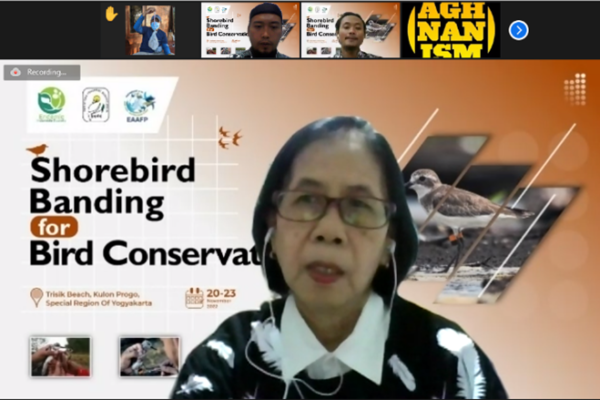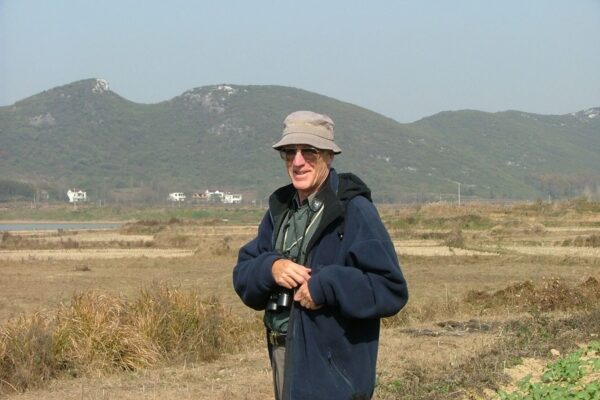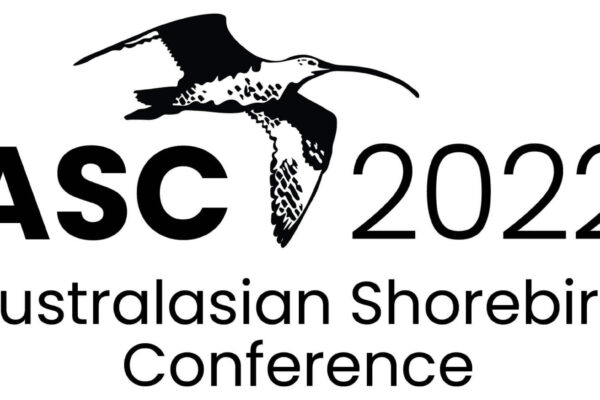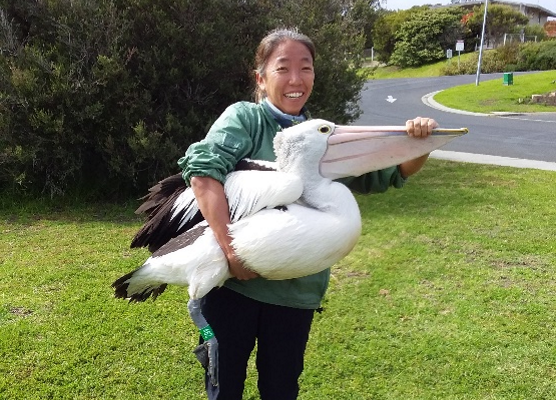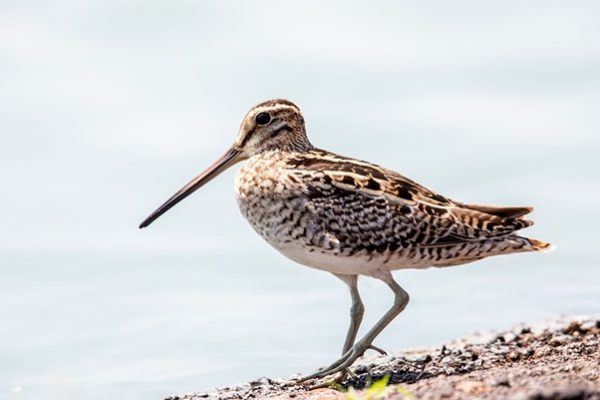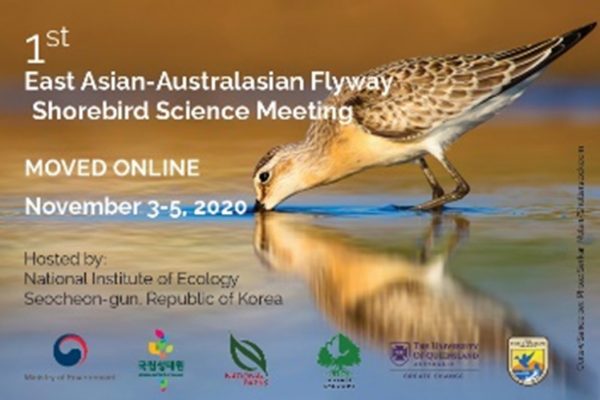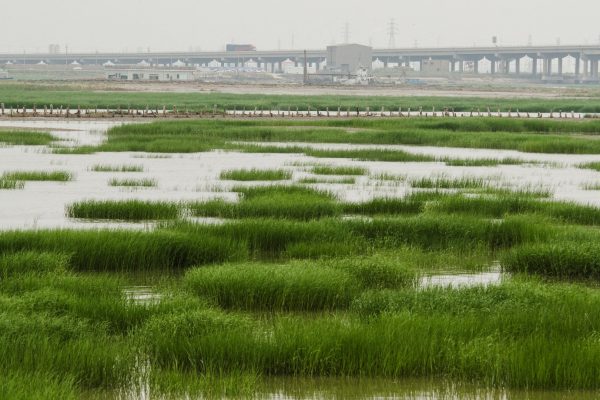-
Seminar and Training on Shorebird Banding for Bird Conservationists at Trisik Beach, Kulon Progo, Special Region of Yogyakarta, Indonesia
2022 EAAFP Small Grant Fund Project by Ahmad Zulfikar Abdullah Endemic Indonesia Society Mist net installation practice © Endemic Indonesia Society Birdbanding is a technique used to study wild birds which had been applied internationally in numerous researches and requires a distinct set of skills and expertise, including equipment use, bird safety, and alertness during the entire process. Bird banding has been a regular activity in Indonesia since the 1950s, and is supervised by the Indonesian Bird Banding Scheme (IBBS). Since 2010, bird banding groups have emerged from different cities including Bogor, Yogyakarta, and Surabaya. However, the majority of these groups have failed to maintain a consistent program for the past few years, which resulted in the absence of new bird banding activists. This is shown by the stagnant number of licensed bird bander in Indonesia. With support from the EAAFP Small Grant Fund for Working Groups and Task Forces, Endemic Indonesia Society organized a bird banding-focused event through seminars and training. This event, which was held on November 19-23, 2022, has been conducted in Yogyakarta due to its ease of access and could involve the active bird banding community, Jogja Birdbanding Club. We believe that reintroducing bird banding through seminars and hands-on workshops to bird conservation activists, especially the younger age group, is urgently needed to ensure the continuity of bird banding scheme in Indonesia as well as keeping information on bird migration updated. Seminar The first plan for the seminar, which was held offline, was changed to online in order to reach more participants. This seminar has presented speakers from ornithology experts, especially those related to bird banding and wetlands. Participants who attended the event came from various backgrounds such as bird researchers, bird watchers, university students, local NGOs, government staff especially in the environment sector, and the local community. Presented seminar topics including : National and Global Perspective of Bird Banding Speaker: Prof. Dr. Dewi Malia Prawiradilaga, MSc., PhD. (National Research and Innovation Agency; Indonesian Bird Banding Scheme) Bird Banding Techniques & Application in Research Speaker: Ign. Pramana Yuda, Ph.D. (Lecture of Atma Jaya Yogyakarta University; President of Indonesian Ornithologists Union) Wetlands and Migratory Bird Conservation Speaker : Ragil Satriyo Gumilang, S.Hut., M.Si. (Wetlands International Indonesia) Goverment’s Role in Migratory Bird Conservation in Trisik Beach Speaker: Tri Dibyo Sumbogo (Natural Resources Conservation Agency of Yogyakarta) First Speaker Second Speaker Third Speaker Fourth Speaker The seminar that was held one day before the training went successfully. Discussions during the seminar showed that the topics presented by the speakers were well understood by the participants. From this seminar, it can be concluded that wetland conservation is generally known by the public, but it's the exact opposite in bird banding. It needs to be collaborative activities that involve many stakeholders if we want to apply this method to support bird and habitat conservation programs. Training The training was attended by 20 participants who had registered and been selected. This activity was assisted by trainers and assistants who have bird banding licenses issued by the Indonesian Bird Banding Scheme. The main trainer was Iwan Febrianto from the Yayasan Ekologi Satwa Liar Indonesia. Participants came from various backgrounds such as students, lecturers, NGO activists, bird watchers, and veterinarians. These activities were divided into two stages. The first stage was conducted twice, in July and September, with passerine birds as the target. This stage aimed to introduce and familiarise the participants with bird banding techniques. Some of the birds that were successfully tagged including: Actitis hypoleucos, Alophoixus bres, Arachnothera longirostra, Cinnyris ornatus, Halcyon cyanoventris, Lonchura leucogastroides, Orthotomus sutorius, Passer montanus, Pellorneum capistratum. Bird banding in July Introduce mist net installation Bird tagging Halcyon cyanoventris Bird banding in September Bird measurements Actitis hypoleucos Orthotomus sutorius The second stage, training with shorebird targets, was conducted in November in Trisik beach area and Progo River estuary. Both locations become an ideal location for our training program due to its easy access and long history of shorebird records. Briefing for participants Mist net installation practice Mist net installation practice Mist net installation practice During the four days of training, it was raining almost every evening and night with strong winds. This condition causes the installation of nets to become not optimal considering that shorebird banding is ideally carried out at night. The training was maximized in the morning and afternoon by targeting birds in the location, which were mostly passerine birds. Some of the birds that were successfully tagged including: Alcedo coerulescens, Anthreptes malacensis, Cisticola juncidis, Geopelia striata, Lonchura leucogastroides, Lonchura punctulata, Orthotomus sutorius, Passer montanus, Prinia inornata, Turnix suscitator. Calidris alba Calidris melanotos Phalaropus fulicaria Philomachus pugnax The conclusion from these events is that there are needs to be encouragement in the form of continuous activities to optimize the use of this method, in order to support bird and habitat conservation efforts. The project was funded through the 2022 EAAFP WG/TF Small Grant Fund. View the report, Click here.
Continue reading -
Mark Barter Travel Award and Australasian Shorebird Conference 2022
Following the announcement of the Australasian Shorebird Conference (ASC) organized by Australasian Wader Study Group and Queensland Wader Study Group, to be held virtually on 29-30 October 2022 (link), please mark the date and stay tuned for further information about the program, registration arrangements, and call for abstracts will be forthcoming in the near future. In line with the ASC, the Mark Barter Travel Award nomination has been launched. Mark Barter Travel Award The AWSG Committee will again be offering an Award to honour the late Mark Barter. Shorebird workers and others will be aware of the tremendous contribution that Mark made to the understanding and conservation of shorebirds in the East Asian- Australasian Flyway over many years. In view of Mark’s substantial contributions through monitoring, training and education focused on the Yellow Sea region, this Award seeks to build on Mark’s work by encouraging the further experience and development of young people who have demonstrated an interest in this work. Scope of Award The recipient of this Award will be sponsored to participate in the 2022 Australasian Shorebird Conference (ASC) which will be held online 29th – 30th September. The Award will cover the cost of registration for the recipient. Selection Criteria As the Award is focused on the Yellow Sea region, applications are sought from interested people from China, the Republic of Korea and the Democratic People’s Republic of Korea. Applicants should have a demonstrated interest in shorebirds and supporting their conservation through a scientific approach. The successful applicant is strongly encouraged to give an oral or poster presentation to the ASC. Applications Applications with supporting information should be forwarded to awsgconference@gmail.com by 1 August 2022. At least two referees should be nominated in the application. Mark Barter. Photo courtesy: Australasian Wader Study Group
Continue reading -
Announcement of 12th Australasian Shorebird Conference
The 12th Australasian Shorebird Conference will take place from 29-30 October 2022, hosted jointly by the Australasian Wader Studies Group and the Queensland Wader Studies Group. We are pleased to announce that the Conference will be an online event, in hopes of encouraging broad participation from around Australia and across the East Asian – Australasian Flyway. The theme for this Conference is “Global Strategies Local Actions” and through the Conference program, we will look at what has been happening across the East Asian – Australasian Flyway since the 11th Australasian Shorebird Conference held in 2018. We have developed an exciting program on shorebird natural history, counting, research and local conservation action over the last 4 years to give you a fascinating insight into the knowledge and understanding of shorebirds as well as the work being done towards their conservation. We know of the many ongoing challenges that shorebirds face, including loss of habitat, hunting, pollution and competition for food resources. Add to that the increasing threats from climate change and greater impacts from a growing human population in the Flyway, their world becomes more and more uncertain. Strong efforts are being dedicated at the global and local level to understanding, raising awareness for, and addressing the problems facing shorebirds. You will see this reflected through the range of exciting sessions during the two days. Knowledge and action go hand in hand, and we will see all the efforts that have been put in to achieving better outcomes for shorebirds. All keen “shorebirders” will find the program of interest however you are engaged with our amazing shorebirds. We encourage you to register and join the Conference to learn more about and be part of the wonderful world of shorebirds and those seeking to ensure their conservation. Conference official website, visit here. Abstract submission deadline: 15 August, 2022 Participation registration deadline: 30 October, 2022 Mark Barter Travel award information, check here.
Continue reading -
“Flyway: connecting people and migratory waterbirds” story series #12 – Ms. Katherine Leung
If someone asked Katherine Leung what is her work, “Following the migratory waterbirds” may probably her answer. This EAAFP flyway featuring this lady who migrates along the coast of…
Continue reading -
EAAF Shorebird Tracking Group 1st Webinar
The EAAF Shorebird Tracking Group, established in 2021 following the 1st East Asian-Australasian Flyway Shorebird Science Meeting in 2020, held the first webinar on 13th…
Continue reading -
Calling snipe and woodcock experts!
Have you been working closely on snipe or woodcock?…
Continue reading -
1st East Asian-Australasian Flyway Shorebird Science Meeting Report
Over 400 people from 39 countries/regions registered for the 1st East Asian-Australasian Flyway Shorebird Science Virtual Meeting (EAAFSSM) that took place…
Continue reading -
Invasive Spartina alterniflora and tidal flat loss endanger important shorebird habitat in coastal mainland China
Coastal wetlands in mainland China are critically important to shorebirds. Substantial loss of tidal flats, shorebirds’ primary feeding grounds, has occurred due to coastal development. This has caused population…
Continue reading

